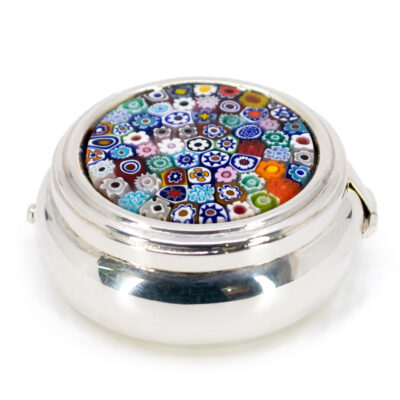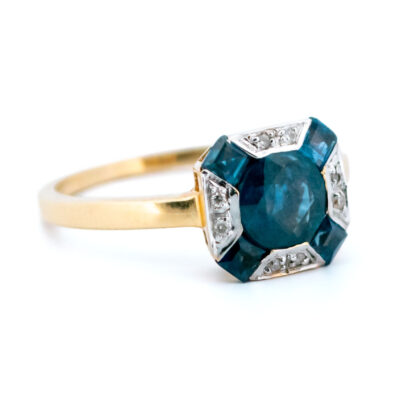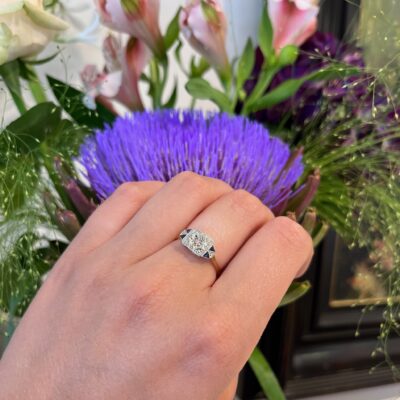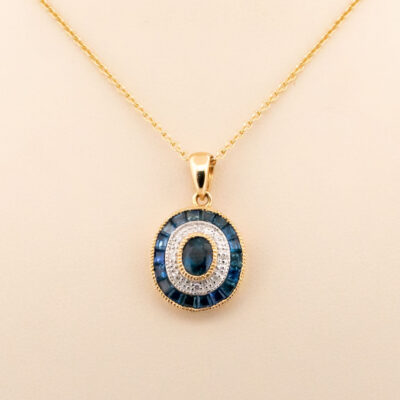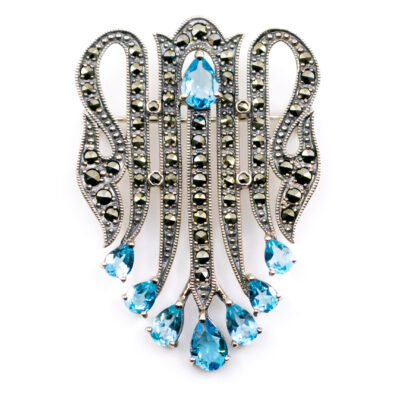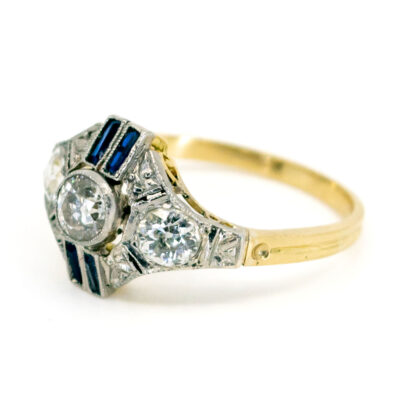Designed in the late 1920s and signed Le Verre Français, this vase captures the shift from Art Nouveau to Deco. Stylized florals climb its maroon and coral cameo surface, brought to life by Schneider’s expert acid-etching technique — a poetic blend of art and ornament.
Videos
Details: Glass Vase.
Dimensions: H: 32 cm W: 11,4 cm.
Weight in grams: 814,3.
Condition: Good condition – used with some signs of wear.
This vase is a textbook example of Charles Schneider’s artistry under the Le Verre Français line. The controlled use of acid-etched cameo glass and stylized floral design typify the aesthetic principles of the Art Deco movement, balanced with an organic influence inherited from Art Nouveau.
This work would be of particular interest to collectors of early 20th-century French glass, especially those focused on Schneider, Daum, or Gallé. While valuation is outside the scope here, this piece’s stylistic and technical qualities make it a remarkable artifact of its time.
Shipping and Pickup: This exquisite piece ships from our store located in the center of Amsterdam, The Netherlands. We offer both registered shipping and local pickup at our store. In the case of local pickup, any applicable shipping costs will be refunded.
About Us: Add some sparkle to your style with Binenbaum.com. We offer a stunning selection of antique and vintage jewelry that you won’t find anywhere else. From timeless rings and dazzling necklaces to unique brooches, we have something for every taste and occasion. Visit our website today and treat yourself to a piece of history.
| Design Era | |
|---|---|
| Design & Historical Context | Art Nouveau, also known as the Modern Style or or Jugendstil, is a decorative art movement that emerged in the late 19th century and was popular until World War I. It is characterized by its use of flowing, organic lines and naturalistic motifs, such as flowers, plants, and animals, as well as its emphasis on craftsmanship and the use of unconventional materials, such as glass, ceramic, and metal. Art Nouveau jewelry often features intricate and detailed designs, with a focus on curved lines and natural forms. The jewelry is often made of precious metals, such as gold and silver, and may be adorned with gemstones, enamels, and other decorative elements. One of the most distinctive features of Art Nouveau jewelry is its use of elongated, sinuous lines and flowing, organic shapes, which were meant to evoke a sense of movement and fluidity. The jewelry often depicts nature themes, such as flowers, vines, and leaves, as well as abstract and symbolic motifs, such as the female form, which was often depicted in a sensual or romanticized way. Art Nouveau jewelry was popular in many countries, including France, Belgium, Austria, and the United States, and was produced by a wide range of designers and artists, including Louis Comfort Tiffany, René Lalique, and Gustav Klimt. Despite the popularity of Art Nouveau, the movement eventually fell out of favor after World War I, and was replaced by more geometric and industrial styles. However, it has often been revived and continues to influence contemporary jewelry design. |
| Materials & Craftsmanship | Glass: The Versatile Medium of Creativity and Elegance Glass, a material known for its clarity and versatility, has been used in jewelry for centuries, offering endless possibilities for creative expression. Whether in the form of beads, cabochons, or intricate hand-blown designs, glass can mimic the look of precious gemstones or stand out as a unique element on its own. Historically, glass has been a staple in jewelry-making, from ancient Egyptian faience beads to the intricate millefiori patterns of Venetian glass. Glass jewelry became particularly popular in the Victorian era, where it was often used to create elaborate mourning jewelry and delicate cameos. The ability to mold, color, and polish glass allowed artisans to produce stunning pieces that were both affordable and beautiful. In modern jewelry, glass is cherished for its artistic potential and wide range of colors, shapes, and finishes. It can be clear, frosted, colored, or even infused with metallic elements to create iridescent effects. Glass is commonly used in costume jewelry, where it adds a pop of color and elegance at an accessible price point. It's also a favorite in artisan and handmade designs, where its versatility allows for unique, one-of-a-kind creations. Glass is more than just a material; it is a canvas for creativity and innovation in jewelry design. Its ability to capture light and color makes it a timeless and stylish choice for pieces that are both expressive and elegant. Whether as a bold statement or a subtle accent, glass in jewelry offers a blend of beauty, history, and modern artistry. |
| Dimensions | H: 32 cm W: 11,4 cm |
| Weight (in grams) | 814,3 |
| Condition |
By following these tips, you can enjoy your precious jewelry for many years to come.
Related Products
-
Enamel Glass “Çzech/Bohemian” Vase 1245-1592
€ 995,00 VAT incl. (where applicable) -
Glass Silver Murano Box 16153-3127
€ 265,00 VAT incl. (where applicable) -
Diamond Pearl 14k Platinum Deco Brooch 14922-8422
€ 1.395,00 VAT incl. (where applicable) -
Diamond Sapphire 14k Deco Ring 14393-8321
€ 1.795,00 VAT incl. (where applicable) -
Diamond Sapphire 18k Deco Ring 13732-2396
€ 1.295,00 VAT incl. (where applicable) -
Diamond Sapphire 14k Deco Pendant 13791-0259a
€ 1.995,00 VAT incl. (where applicable) -
Topaz Marcasite (Pyrite) Silver Deco Brooch 13118-1175
€ 295,00 VAT incl. (where applicable) -
Diamond Platinum Sapphire 14k Deco Ring 11510-2295
€ 3.395,00 VAT incl. (where applicable)
- Home
- Collection
- Fine Jewelry
- Silver Jewelry
- Silverware
- Boxes
- Candlesticks
- Salt and pepper shakers
- Miniatures
- Salt cellars
- Spoon Set
- Condiments
- Frames
- Napkin Ring
- Spoon
- Oddities
- Cups
- Vases
- Cutlery
- Serving Spoon And Cake Server
- Candlesticks
- Baskets
- Hanukkiah
- Spice Tower
- Yad
- Tea Set
- Sugar Castor
- Napkin Rings
- Wine Bottle Coaster
- Wine Stopper
- Tea Pot
- Jugs
- Rattles
- Hip Flask
- Miscellaneous
- Rings 💍
- About
- Contact






